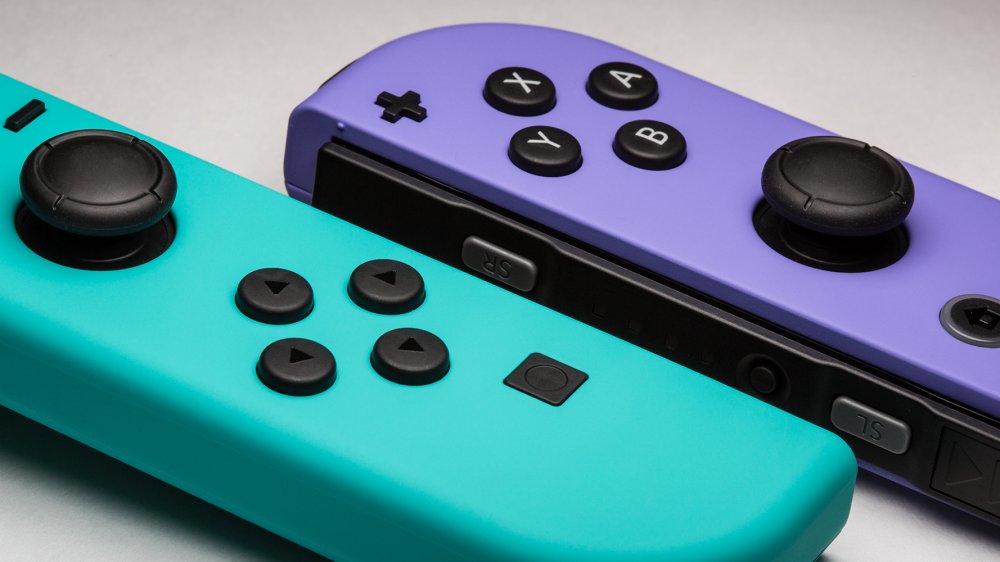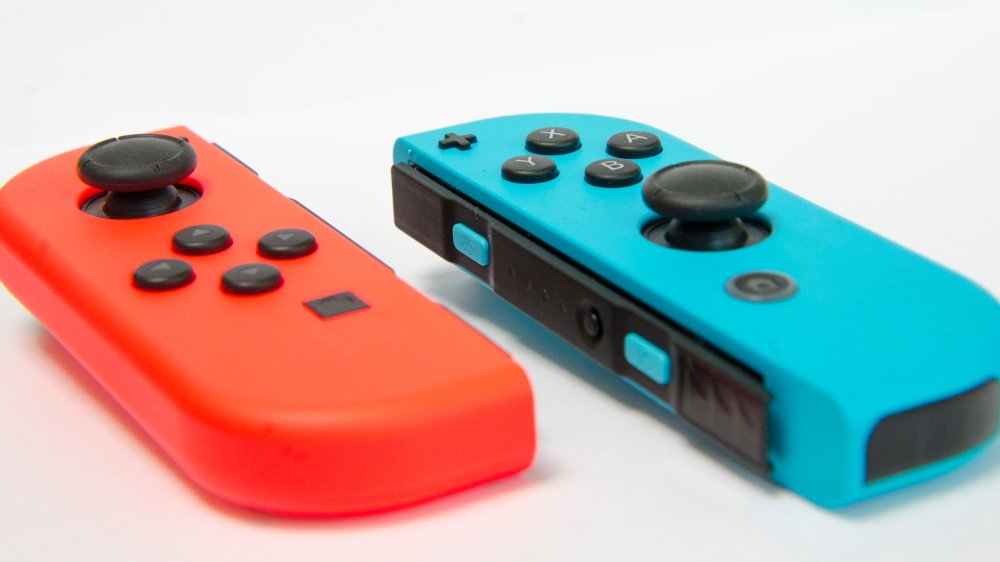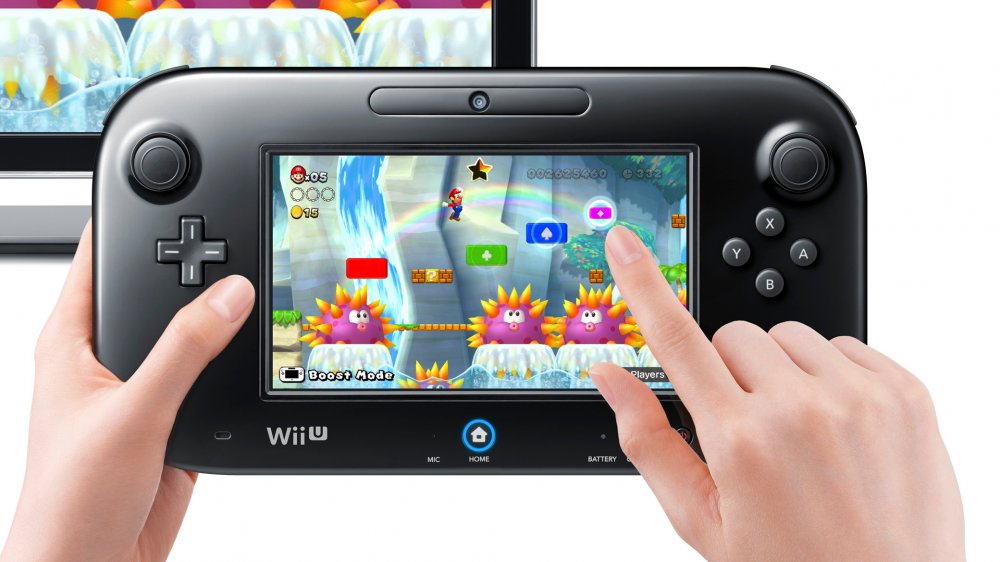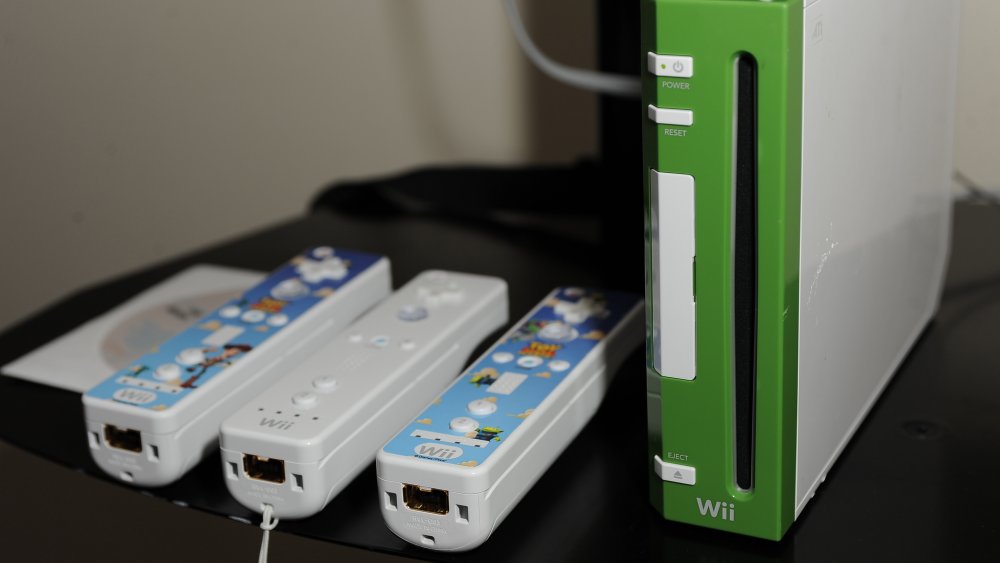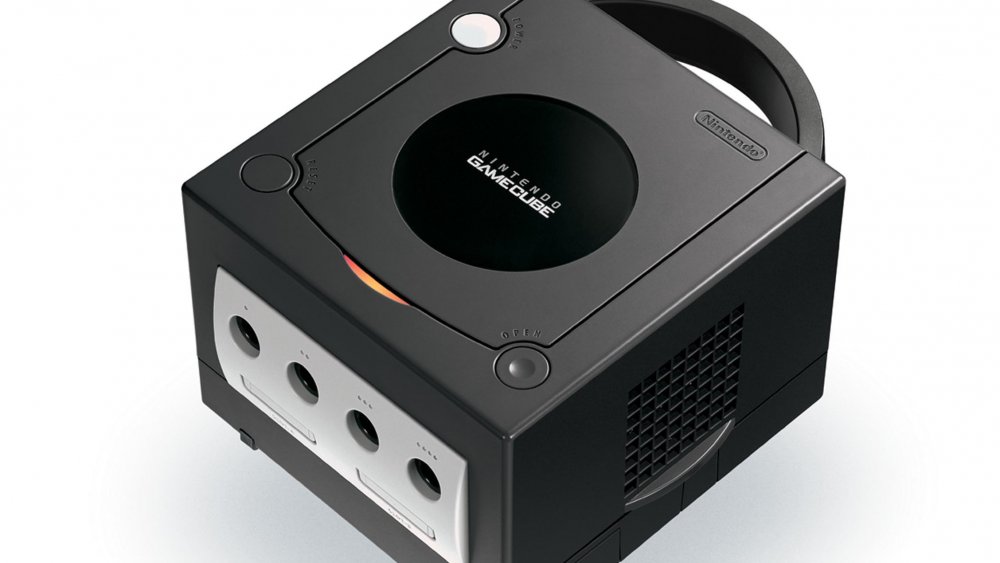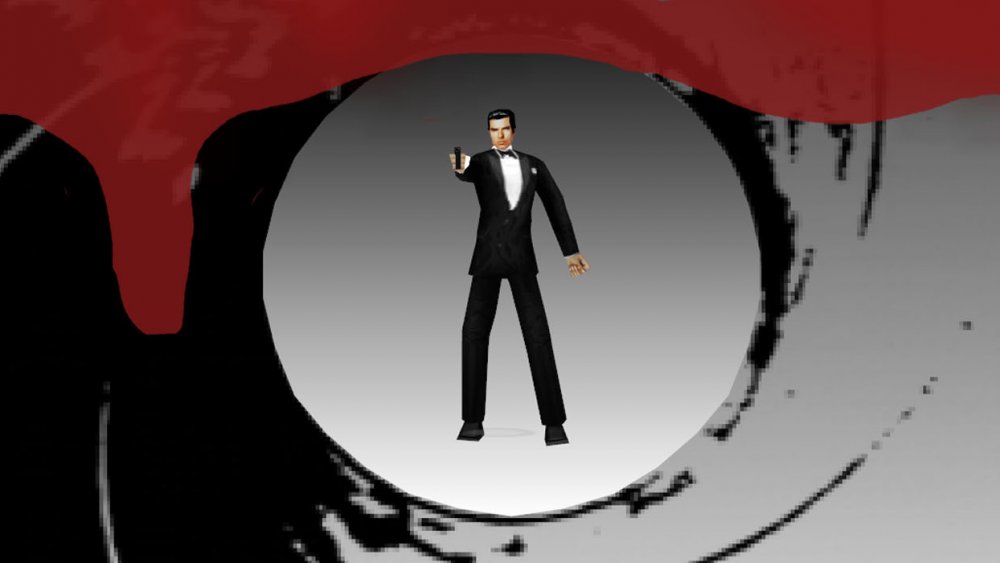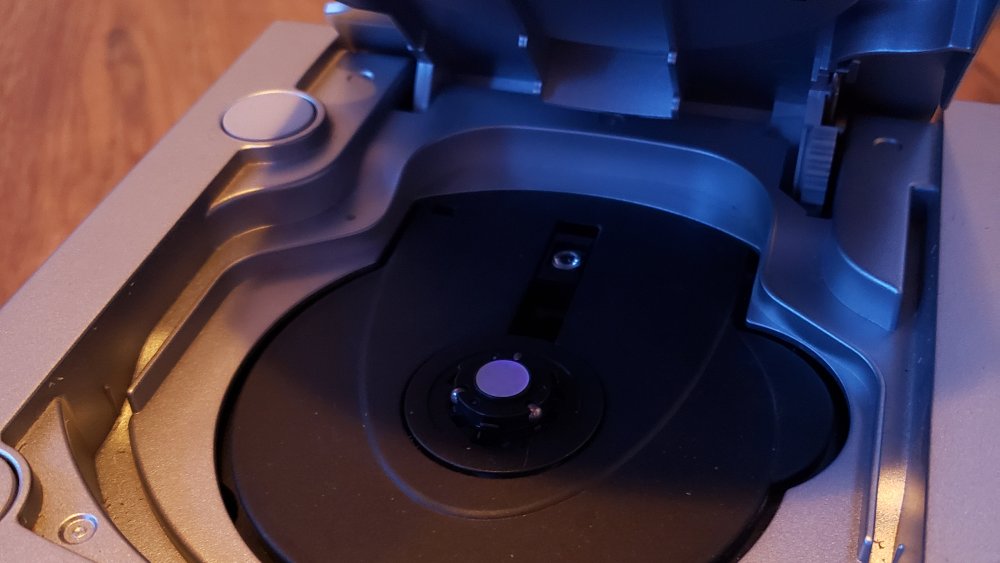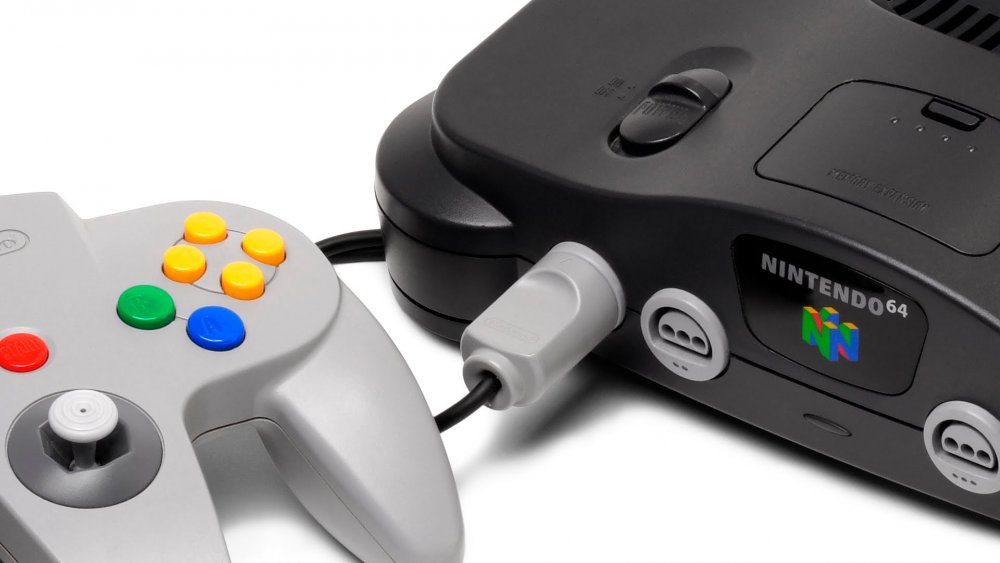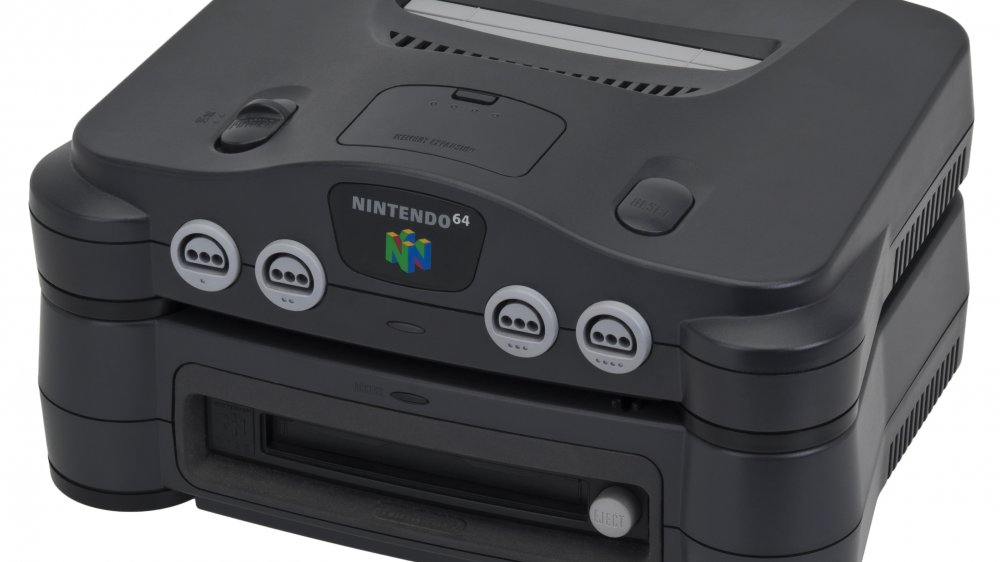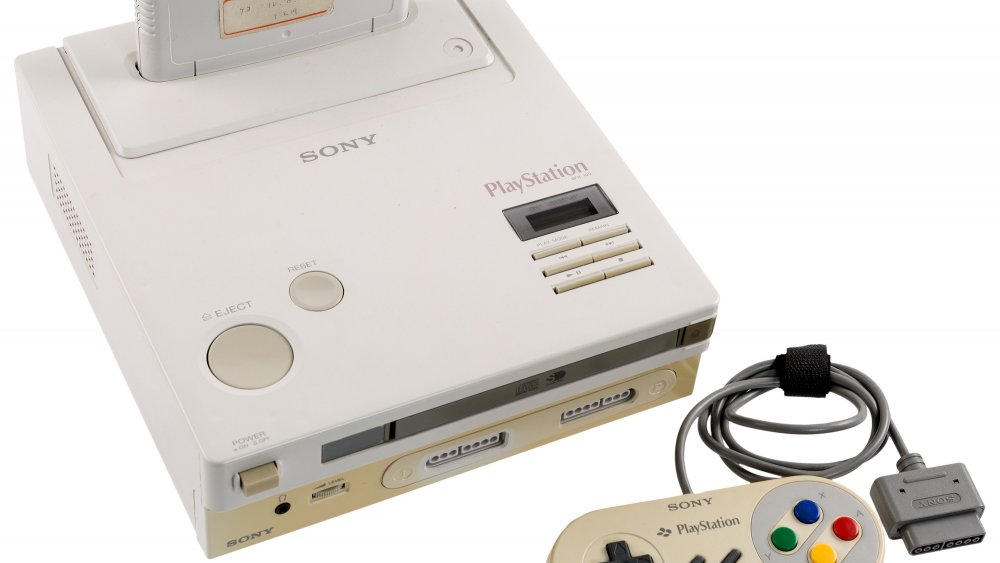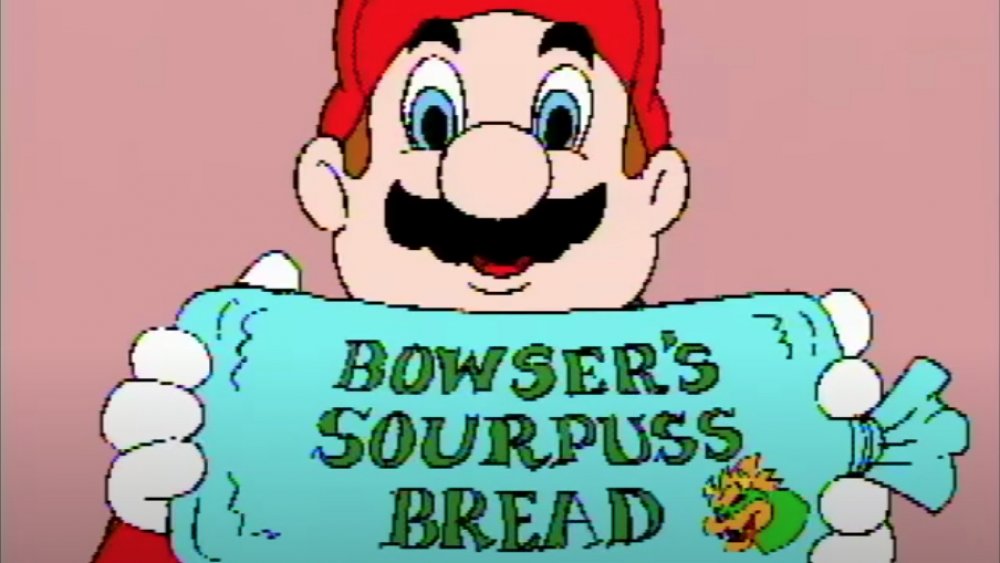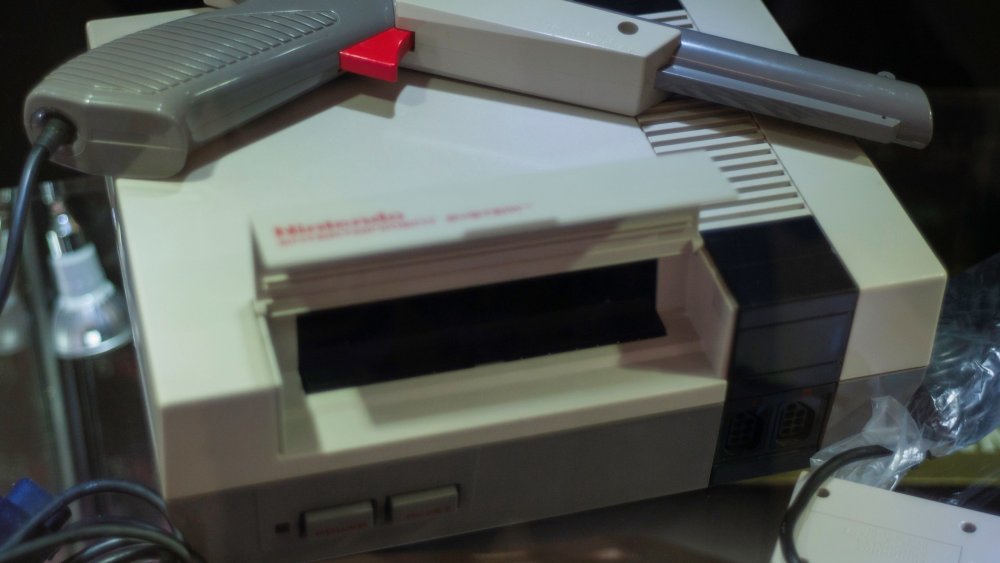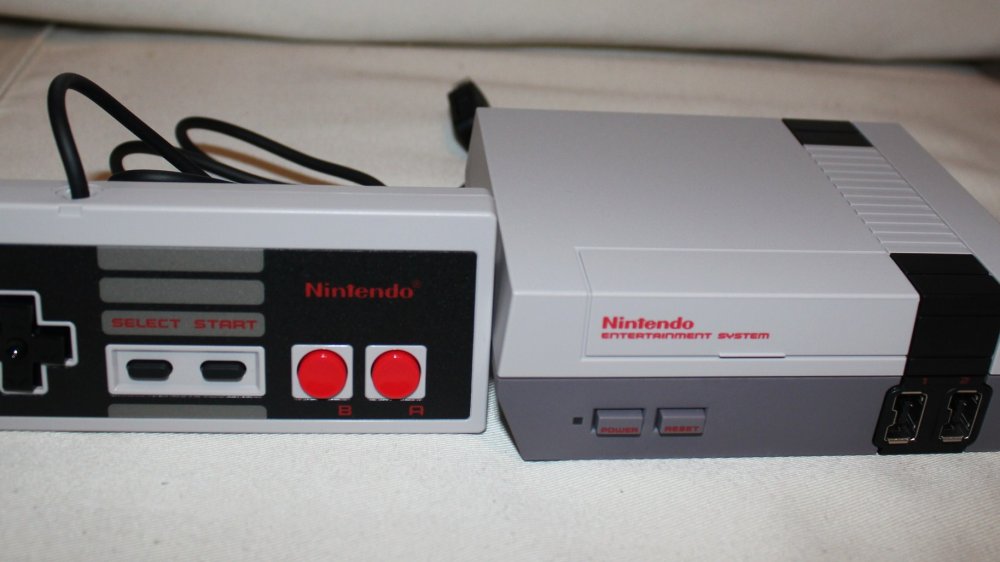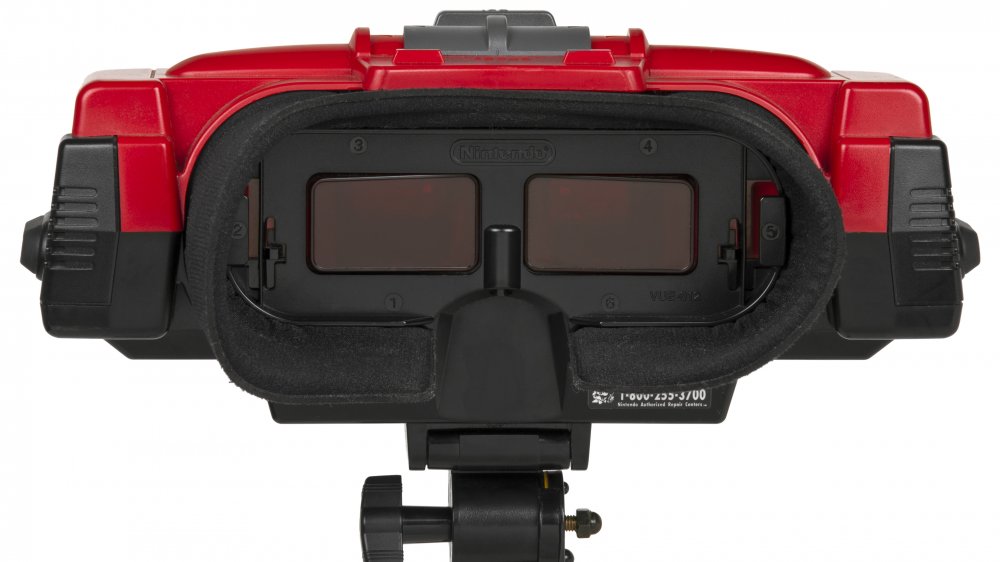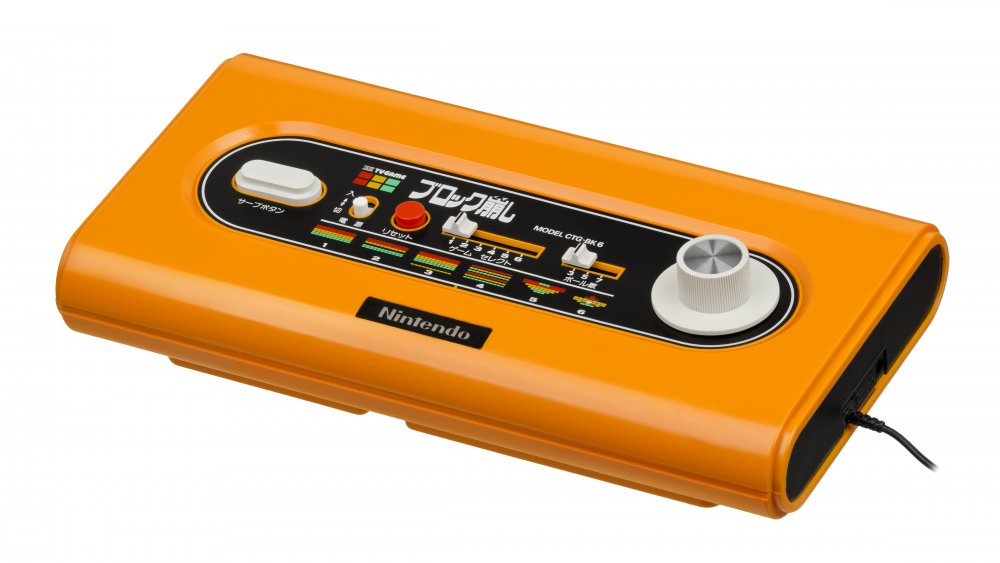Things Nintendo Wants You To Forget About Its Consoles
Nintendo is one of the most beloved video game companies of all time. With unforgettable franchises like Mario, Zelda, Metroid, Donkey Kong, and many others under its belt, it's no wonder it is held in such high esteem. Since 1985, households across America have enjoyed its creations on living room televisions, bringing family and friends closer together.
Though you might think a company that brings so much creative joy to consumers would be viewed in a purely positive light, Nintendo has a history of making some rather questionable and outright confounding decisions. While it has brought some of the greatest video game series to life, it has also made some of the greatest blunders in the history of the industry.
From controller drift and botched marketing campaigns to multiple technological blunders, here are the things Nintendo wants you to forget about its consoles.
The great Joy-Con debacle
Could the Nintendo Switch be the culmination of over 40 years of consumer gaming technology? A home system that quickly doubles as a portable, with detachable controllers for on-the-go two-player tabletop action, it is, perhaps, the most versatile device released yet. The console has proven wildly lucrative, even outselling both the GameCube and N64 combined! With so much success, you might think Nintendo avoided any major mistakes. Unfortunately, there's a big problem you can't ignore.
The Joy-Cons. Oh, those awesome, innovative little Joy-Cons. Joy-Con drift has plagued Switch owners since the early days, causing plenty of strife for both consumers and Nintendo. For the consumers, it's unwarranted movement when the thumbstick is left in its neutral position. For Nintendo, it's the class-action lawsuit. Even the Switch Lite has fallen victim to this frustrating defect.
While the issue can ruin your otherwise magnificent experience with this system, Nintendo is reportedly willing to fix the problem for free. Unfortunately, it might not cover postage, leaving many buyers with little choice but to pay to fix a problem they didn't cause.
Naming the Wii U
"What exactly is the Wii U?" Many consumers uttered this question following its announcement, and they continued to ask this same question far into the system's life cycle. As a followup to the Wii, you could easily confuse the Wii U for an add-on to its outrageously popular predecessor. This was an unfortunate turn of events, as the Wii U was a very interesting and innovative console predicted to perform almost as well as the Wii.
Confusion over the name is understandable, and undoubtedly hurt its chance of success. The Wii U's marketing didn't help either. Considering much of the focus was on the novel gamepad, it may have been doomed from the very beginning. Even retailers and major news outlets were confused. According to Polygon, CNN called the Wii U an "accessory," later correcting the mistake. But the damage was done.
Once the name and marketing campaign were out the gate, there was no turning back. The confusion continued and the Wii U's fate was decided. By 2016, the system had only sold a paltry 13 million units, falling far short of the Wii's sales figures. It's frustrating to think how such a trivial detail could affect such a unique product.
The Wii: A jailbreaker's paradise
Despite Nintendo's staunch opposition to emulation, piracy, or any modifications to its IPs, the Wii became a popular system for jailbreaking. Indeed, the Wii was a wildly successful console, giving Nintendo renewed hope after the disappointing performance of the GameCube. But, as the system got on in years, the gimmick grew old and the white brick began to collect dust. So, when word got out that the Wii was easy to hack, it became a natural favorite within the hacking/homebrew community.
Once you jailbreak your Wii, you're left with a very versatile entertainment console offering numerous possibilities. With its nifty Wiimote, a simple hack can turn the system into a DVD player. Gaming possibilities are no longer limited to the handful of first-party gems and the plethora of shovelware as the door opens to play and develop homebrew titles. Players also discovered you can use your modded Wii as an all-in-one gaming resource by loading it with emulators and ROMs. Much to the chagrin of Nintendo, these are just a few of the possibilities once a Wii is hacked.
The GameCube didn't do as well as nostalgia wants you to think
Picture this: it's 2001. You just finished watching Cartoon Cartoon Fridays with your friend. Now it's time to pop in your copy of Super Smash Bros. Melee and show said friend who's boss. Those were the days!
Many remember the GameCube fondly thanks to its robust library and strong first-party offerings. With your rose-tinted glasses firmly in place, it's difficult to admit the GameCube was not exactly a success.
Considered a flop by some, the GameCube lagged far behind the PlayStation 2 and nearly lost to Microsoft's first console. With a stronger lineup of third-party titles than its predecessor and impressive processing speeds, the Nintendo GameCube should have had a more successful run. A poor marketing plan,the emphasis on the peculiar shape, bad timing, and the lack of a DVD player all contributed to the failure of what is now generally viewed as a beloved system.
Against all odds, the nostalgia and love many reserve for this sixth-generation system should be a testament to its strengths. It's just a shame such a great console did not get the credit it deserved back when it was on store shelves.
Losing Rare to Microsoft
Ah, the Gamecube. What a wonderful, unfortunate system. It seems as though luck was not on Nintendo's side for this console. There's no denying the role Rare played in Nintendo's fifth-generation success. Developing hit titles like GoldenEye 007, Banjo-Kazooie, and Perfect Dark, Rare made its mark on the N64. Had things gone as planned, Rare could have continued bringing a slew of successful games to the GameCube. Alas, in 2002 it parted ways with Nintendo and joined Microsoft.
It seems as though Nintendo did not seize the opportunity to hang onto Rare before Microsoft stepped in. It's a shame it broke off when it did because Rare had several games planned for the GameCube, including Donkey Kong Racing, Kameo: Elements of Power, and Perfect Dark Zero. Of the games in development, only Star Fox Adventures made its way onto the cube. Considering Nintendo's strategy of focusing on games over all else, this can be seen as a missed opportunity in beefing up the GameCube's library.
Snubbing DVD functionality for the GameCube
Nintendo loves doing things differently and the GameCube was a shining example of this sentiment. It finally joined the optical media train, yet it simply couldn't go along with the tried and true, standard size. Keeping everything compact, the GameCube used mini-discs over regular-sized media discs, completely eliminating the possibility of popping in a DVD (unless you lived in Japan and were lucky enough to obtain a Panasonic Q).
Nintendo had its reasons, of course. It took pride in offering a console that focused exclusively on games while its competitors integrated DVD functionality. The smaller disc size also made it harder to pirate GameCube titles. But could this move also have hurt the GameCube's chance to come out on top in the console war?
It's difficult to say for sure. There are other factors to consider, such as a delayed release date that put Sony ahead of Nintendo once again. But there's no doubt DVD functionality helped boost PlayStation 2 sales, as many would go on to purchase the system because it doubled as a DVD player at a very reasonable price. Nintendo accomplished its goal of a game-focused system, but at what cost?
Snubbing optical media for the N64
Many have fond memories of playing their friends in GoldenEye 007, exploring their first 3D adventure with Mario in Super Mario 64, or seeing what Fox McCloud could do in Starfox 64. But just imagine how much better things might have been for the Nintendo 64 had it used optical discs instead of the more expensive and restrictive cartridge format. Not only would its performance have improved, but Nintendo could have continued its partnership with Square. And Final Fantasy 7 could have come out for the N64.
Indeed, there's no denying that Final Fantasy 7 was a groundbreaking title for the PlayStation. But it was Nintendo that gave Square its big break with the original Final Fantasy. For the next five installments, the franchise remained loyal to Nintendo. But, when the gaming giant decided to move forward with cartridges over CDs for its new 64-bit console, the limitations posed a problem for the ambitious new installment in the Final Fantasy series.
Though Final Fantasy 7 was originally slated for the N64, the game outgrew the capacity of cartridges. Square chose the PlayStation instead, and the rest is history.
The 64DD
Nintendo really couldn't seem to figure out its media formats. Back in 1999, Nintendo released the 64 Dynamic Drive (64DD) in Japan, and it was short-lived. Like, a few months short-lived. Though it was planned as a preferred device for some high-profile franchises like the Zelda series (not to mention a solution for third-party companies struggling to develop for the N64), Nintendo did not put much weight into its success. It never moved beyond a niche market, though evidence suggests Nintendo had bigger plans for the 64DD.
The discovery of a U.S. 64DD prototype revealed that the add-on was likely planned to hit store shelves in the states, but considering the lack of support in Japan, it never really stood a chance overseas. It's a shame too, because the device brought with it internet connectivity and some cool user-design games like Mario Artist: Paint Studio and Mario Artist: Polygon Studio. Had Nintendo more aggressively marketed the 64DD, gamers could have enjoyed a more robust experience with their N64s.
Dropping the ball on the Nintendo PlayStation
Like Batman creating the Joker (or the Joker creating Batman, however you want to look at it), Nintendo created one of its own arch-rivals. The Sony PlayStation originated as a partnership between Sony and Nintendo to produce a CD-ready version of the Super Nintendo. Together, the companies made a working prototype, but along the way something went awry and Sony split off to build its own console. But what exactly happened?
According to VentureBeat, the reason behind the rift was pure distrust on Nintendo's part. Seeing a partnership as a means for Sony to muscle its way into the video game market, Nintendo decided to pull the rug out from under it. A mere day after Sony announced the partnership, Nintendo publicly bowed out. To make matters worse, Phillips took its place in the CD-development project. This would later become something of a self-fulfilling prophecy, motivating Sony even further to enter the market with its own highly successful system.
The Phillips CD-i
Oh boy, Nintendo, what did you do? After abandoning the Nintendo PlayStation, Nintendo moved forward with Phillips instead of Sony to develop some kind of optical drive for its consoles. A move that did not turn out well for the company. In fact, it resulted in something Nintendo would likely want to forget more than anything else: four unholy mockeries of two of Nintendo's most revered properties. Hotel Mario, Zelda: The Wand of Gamelon, Link: The Faces of Evil, and Zelda's Adventure.
These embarrassing games resulted from a legal technicality that allowed Phillips to produce their own Mario and Zelda titles for the ill-fated CD-i console. When Nintendo pulled out from this deal as well, Phillips still retained the rights to make games using Nintendo characters. The result was terrible gameplay and laughably crude animated cutscenes that have since been immortalized on YouTube.
While the internet had its fun at the expense of these off-putting oddities, Nintendo's record will forever be blemished by this terrible oversight. Even the disappointing Super Mario Bros. movie fails to be as embarrassing as those four abominations on the CD-i.
The old Nintoaster's biggest design flaw
Who doesn't love the NES? It's an iconic piece of gaming hardware that more or less revitalized the video game industry. Such a beloved system could surely have no major issues, right? Nintendo couldn't have made any big mistakes with this gaming titan. Think again!
The NES has one blaring design flaw that wasn't immediately apparent. Carefully designed to bypass the stigma associated with the video game industry of the early '80s, the NES was made differently from its Japanese counterpart. Instead of top-loading cartridges like the Famicom, the American version was designed to emulate the common VCR with a door and front-loading method.
While this novel loading technique may have been fun and distinguished the NES from past gaming systems, it presented a problem. Upon insertion, users had to press the cartridge into place, which would inevitably bend the pins over time. Repeated use eventually wore out the 72 pin connector, causing the common blinking light many NES owners know so well. Inevitably, there comes a time for all NES consoles when the 72 pin connector needs to be replaced. Sorry Nintendo, you almost nailed it with this otherwise tank of a system.
Short-stocking NES Classic Editions
Nobody likes scalpers, but what were you supposed to do in 2016 if you wanted to buy a NES Classic Edition as a Christmas gift? Unfortunately, there weren't a lot of options, and there's no denying Nintendo was to blame for this mishap. How could Nintendo have so blindly underestimated the popularity of such a hot item, and during the holidays no less?
The NES Classic Edition sold out immediately. People everywhere waited in lines for the chance to obtain one unit out of a very limited in-store supply. It was an unmitigated disaster and scalpers were raking in the profit, making as much as $400+ on the systems. Of course, Nintendo has a history of teasing consumers with high-demand goods in low supply, such as the Wii and Amiibo shortages.
Fortunately, those patient enough to avoid enabling those crafty scalpers were rewarded with a second run of the NES Classic Edition ... almost two years later. By then, the damage was done, and many unfortunate Nintendo enthusiasts had to get their fix at a high price.
The Virtual Boy
No list of Nintendo mistakes is complete without the Virtual Boy. Where to even begin? The Virtual Boy is a misunderstood, misplaced oddity that was doomed from the start. Released only a year before the N64, it didn't really stand a chance to receive the attention it needed for success. Even if it was marketed more aggressively, was there any hope for this awkward, bulky, categorically confusing system? With a sickening black and red graphical palette, headaches were almost a guaranteed price of entry if you wanted to gain any enjoyment from this medieval torture device. Even the system itself warned you against playing for too long.
If the headaches don't stop you, your back and neck certainly will. Billed as a "portable system," the Virtual Boy was anything but, and its design prevented it from being comfortably enjoyed in any position. Lasting less than a year, the Virtual Boy yielded a meager 22-game library (and only 14 in the US). Nintendo was quick to give up on this strange, ghoulish piece of tech in favor of the N64, and the poor Virtual Boy would be forever branded as one of Nintendo's greatest mistakes.
The NES was not Nintendo's first home console
Many know the legend of how the NES bravely ventured out into the rubble that was the video game market in the U.S. and brought it back from the dead. It's an inspiring tale of marketing tactics where, with the help of a toy robot, Nintendo was able to sneak the system into homes. Such a triumphant victory for Nintendo's first home console cannot be shrugged off. It accomplished what was thought to be impossible, and on its first try too. Only the NES wasn't its first home console.
Released in Japan in 1977, the Color TV-Game would mark Nintendo's first foray into the home gaming sector. It released five iterations from then until 1980, and all the games were built in. That's right folks! Nintendo's very first gaming system was essentially a Pong clone. Not nearly as glorious as the thought of Nintendo revitalizing the video game industry with its first system. But hey, second time's the charm?
Considering the NES was Nintendo's first console in American, and it was the American video game market that was decimated, perhaps the legend can still stand as it is.

